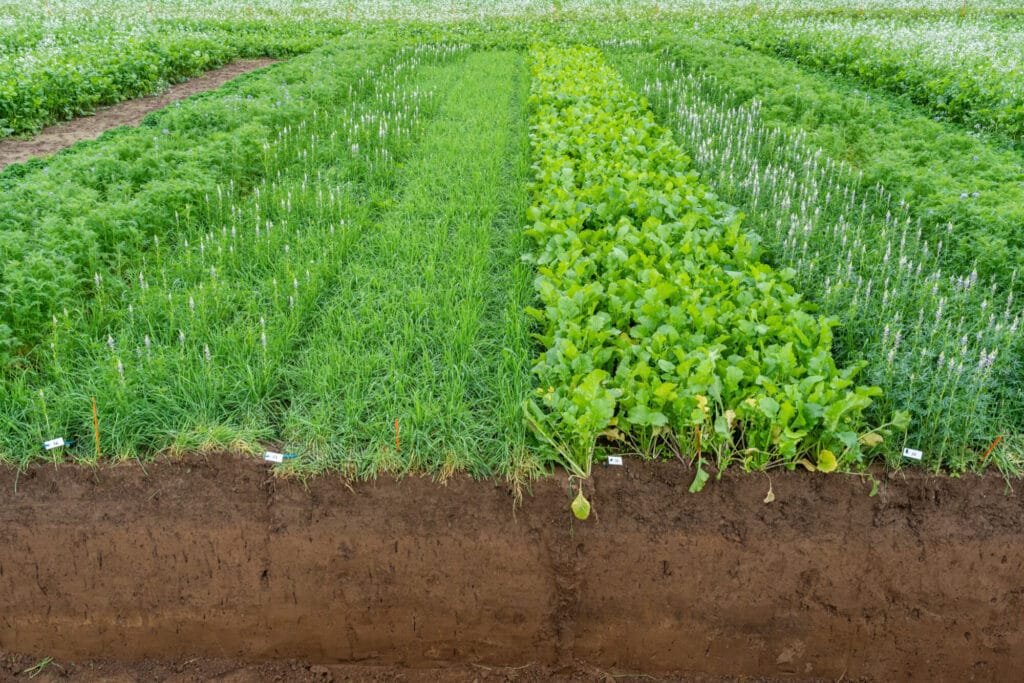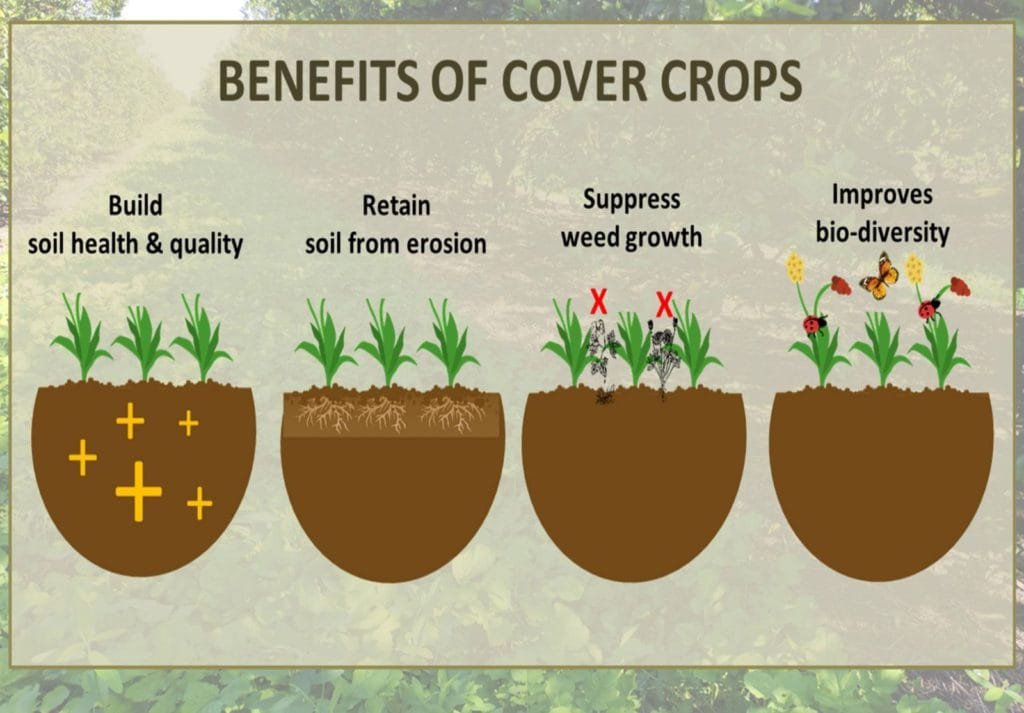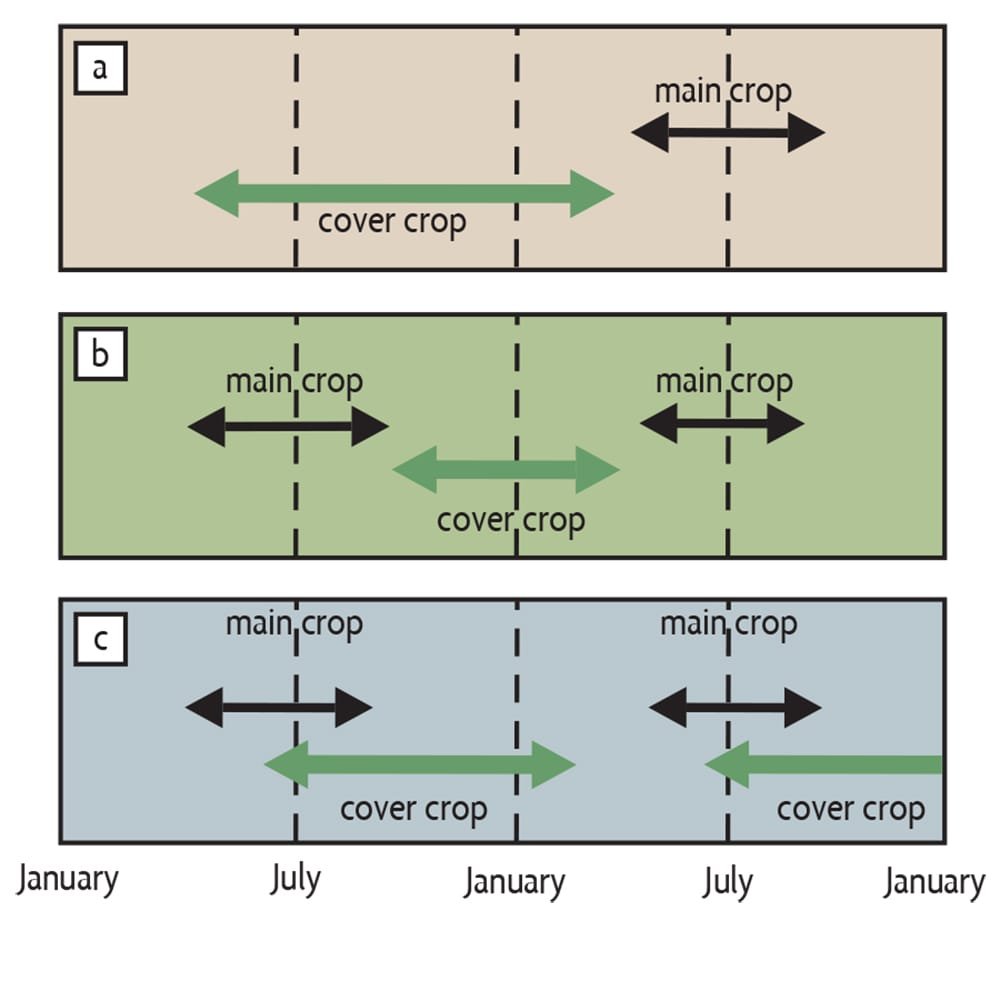
Summary of Contents
Introduction
Ever wondered how you could keep your soil healthy between planting seasons? That’s where cover cropping steps in. It’s a simple yet powerful technique where farmers plant specific crops primarily to protect and improve the soil. On my farm in Northeast India, where the monsoon seasons can be unpredictable, cover cropping has been a lifesaver. Not only does it protect the soil from erosion, but it also enriches the land for the next crop.
Let’s explore what cover cropping is, how it works, and why it’s such an essential tool for sustainable agriculture.
What is Cover Cropping?
Cover cropping is the practice of planting specific crops, known as cover crops, to protect and enhance soil health during periods when the land would otherwise be bare. These crops aren’t grown for harvest but to cover the soil, prevent erosion, improve fertility, suppress weeds, and increase biodiversity.
Think of cover cropping like a protective blanket for your soil. It prevents your land from getting exhausted, shields it from wind and rain, and feeds the soil with nutrients, preparing it for your next cash crop.
Step 1: Choose the Right Cover Crops
The first step in cover cropping is selecting the right cover crops for your farm. Some cover crops are great for fixing nitrogen in the soil, like legumes (e.g., clover and alfalfa), while others, like grasses (e.g., rye or oats), are excellent for reducing erosion.
On my farm, I often plant mustard and cowpeas during the off-season. Mustard helps suppress pests, while cowpeas enrich the soil with nitrogen. Each crop has its job!
Step 2: Plant at the Right Time
Timing is crucial. Plant your cover crops after harvesting your main crops or during the offseason. The idea is to cover the soil when it’s most vulnerable to erosion, nutrient loss, or weed growth. In Northeast India, I plant cover crops after the paddy harvest to protect the soil during the dry season.
Step 3: Let the Cover Crops Work Their Magic
Once your cover crops are planted, let them grow and do their job. They’ll protect the soil from erosion, improve water retention, and add organic matter to the soil. Some cover crops also attract beneficial insects or repel pests, further helping your farm.
Benefits of Cover Cropping

1. Improves Soil Health
Cover crops act as nature’s fertilizer, improving soil fertility by adding organic matter. Crops like legumes fix nitrogen, making the soil richer for future plantings.
2. Prevents Soil Erosion
In areas prone to heavy rains or strong winds, like Northeast India, cover crops anchor the soil in place, preventing it from washing or blowing away. This helps preserve the topsoil, which is crucial for healthy farming.
3. Suppresses Weeds
Certain cover crops, like mustard, act as natural weed suppressors. They grow quickly and densely, shading out weeds and reducing the need for herbicides.
4. Enhances Water Retention
Cover crops improve the soil’s structure, helping it hold onto water. This is particularly useful in dry spells, ensuring your soil stays moist and fertile for the next planting season.
5. Increases Biodiversity
Cover cropping promotes biodiversity by attracting beneficial insects, improving soil microbes, and breaking pest cycles. This natural diversity keeps your farm healthier and reduces reliance on chemical pesticides.
Challenges of Cover Cropping
While cover cropping has many benefits, it’s not without its challenges:
1. Costs and Labor: Planting cover crops requires additional labor and can add to costs, especially for small farms. You won’t directly profit from cover crops since they aren’t harvested, but the long-term benefits often outweigh the upfront investment.
2. Timing: If cover crops are not planted at the right time, they can compete with your main crops for water and nutrients. It’s important to plan your planting and termination dates carefully.
3. Termination: Managing how and when to terminate cover crops is critical. If not done properly, cover crops can become weeds themselves and hinder the growth of the main crop.
Best Practices for Cover Cropping
1. Choose the Right Crops: Select cover crops that match your soil type, climate, and the needs of your next cash crop. For nitrogen-fixing, opt for legumes; for erosion control, choose grasses like oats or barley.
2. Plant at the Right Time: Always plant your cover crops after harvesting your main crops or during the offseason. This ensures they have time to grow and benefit the soil without competing with your main crops.
3. Terminate Wisely: Before planting your main crops, mow down or till under your cover crops to ensure they don’t compete for resources. This organic matter will decompose and enrich your soil.

Economic Insights: How Cover Cropping Boosts Profitability
While cover cropping involves some initial costs, it ultimately saves money in the long run by reducing the need for fertilizers and pesticides. Healthier soil means healthier, more resilient crops that can fetch better prices at the market. In regions like Northeast India, where unpredictable weather can strain farming, cover cropping is a low-risk investment with high long-term returns.
Additionally, many organic certification programs reward farms that use sustainable practices like cover cropping, which can help farmers tap into premium markets.
Conclusion: Cover Cropping for a Sustainable Future
Cover cropping is one of the simplest yet most effective ways to improve soil health, prevent erosion, and boost farm productivity. By selecting the right cover crops and planting them at the right time, you can create a more sustainable, resilient farm that’s better equipped to handle environmental challenges. For small farmers in Northeast India, where soil erosion and nutrient depletion are common, cover cropping offers a powerful tool to maintain healthy, productive land.
Whether you’re protecting your soil between seasons or preparing for your next big harvest, cover cropping is a must-try for any farmer looking to boost sustainability and profitability.
FAQ Section
What is cover cropping in agriculture?
Cover cropping is the practice of planting specific crops, called cover crops, to protect and improve soil health during periods when the land is not being used for cash crops. These crops are not harvested but are grown to improve soil fertility, prevent erosion, and suppress weeds.
What is an example of a cover crop?
An example of a cover crop is clover, which fixes nitrogen in the soil. Other popular cover crops include rye, oats, and alfalfa.
What are the cover crops in India?
Common cover crops in India include cowpeas, mustard, sorghum, mung beans, and sun hemp. These crops are used to protect and enrich the soil during off-seasons.
What is the best cover crop?
The best cover crop depends on your farm’s needs. Clover and alfalfa are excellent nitrogen-fixers, while rye and oats are great for preventing erosion. Mustard is often used to suppress weeds.
What are the characteristics of a cover crop?
Cover crops typically grow fast, cover the soil, and improve soil structure. They can fix nitrogen, prevent erosion, suppress weeds, and attract beneficial insects.
What are the disadvantages of cover crops?
Some disadvantages include the extra labor and cost of planting and terminating cover crops, the potential for competition with main crops if not managed properly, and the challenge of finding the right time to plant and remove them.
What is the highest yielding cover crop?
Rye is considered one of the highest-yielding cover crops because it grows quickly and provides extensive biomass, which adds organic matter to the soil.
